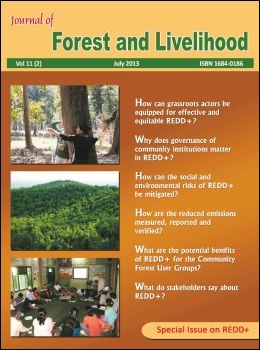What is REDD+ Additionality in Community Managed Forest for Nepal?
DOI:
https://doi.org/10.3126/jfl.v11i2.8620Keywords:
REDD , additionality, land use options, opportunity cost, community forestAbstract
Reducing Emissions from Deforestation and Forest Degradation (REDD+) is a policy currently under consideration by the United Nations Framework Convention on Climate Change (UNFCCC). This study carries out a Nepal-specific research to understand REDD+ policy’s potential role in carbon sequestration, by identifying the economic and preferential rationales that drive deforestation and degradation in community managed forests. The study explores four different land use options, making use of both community based survey and field data used to generate net present value (NPV). Both techniques give consistent results that, in the current economic situation, farmers prefer using land for livelihood purposes rather than solely for community forest management. This has a very strong implication for policymakers. First, the results imply that conversion and degradation are inevitable, thus placing community forest in imminent threat and making this risk reduction additionality in REDD+ terms. Furthermore, it shows that, to combat the drivers of deforestation and forest degradation, policies such as REDD+ need to provide enough financial incentives that will incur the opportunity costs and direct farmers towards the efficient use of community managed forest.
DOI: http://dx.doi.org/10.3126/jfl.v11i2.8620
Journal of Forestry and Livelihood Vol.11(2) 2013 37-45
Downloads
Downloads
Published
How to Cite
Issue
Section
License
CC-BY-NC: This license allows reusers to distribute, remix, adapt, and build upon the material in any medium or format for noncommercial purposes only, and only so long as attribution is given to the creator.





